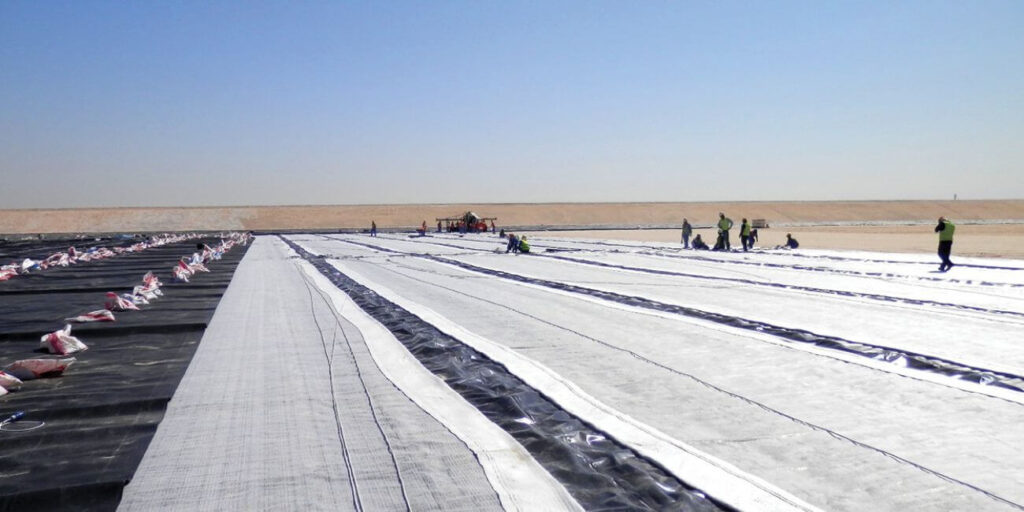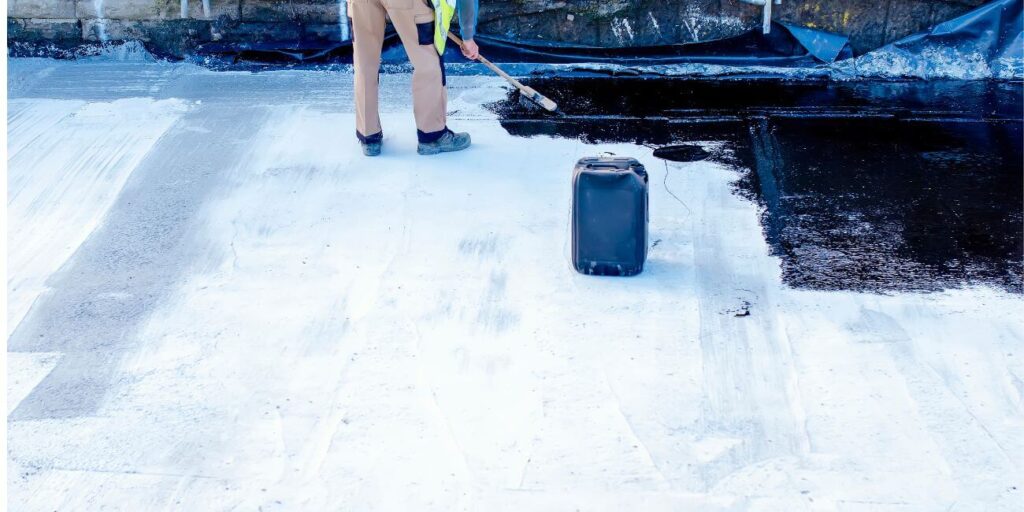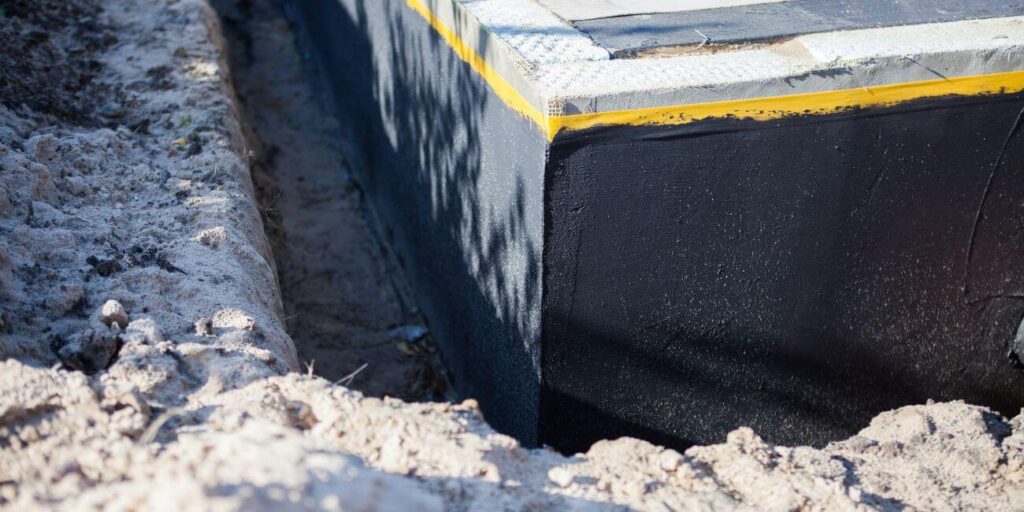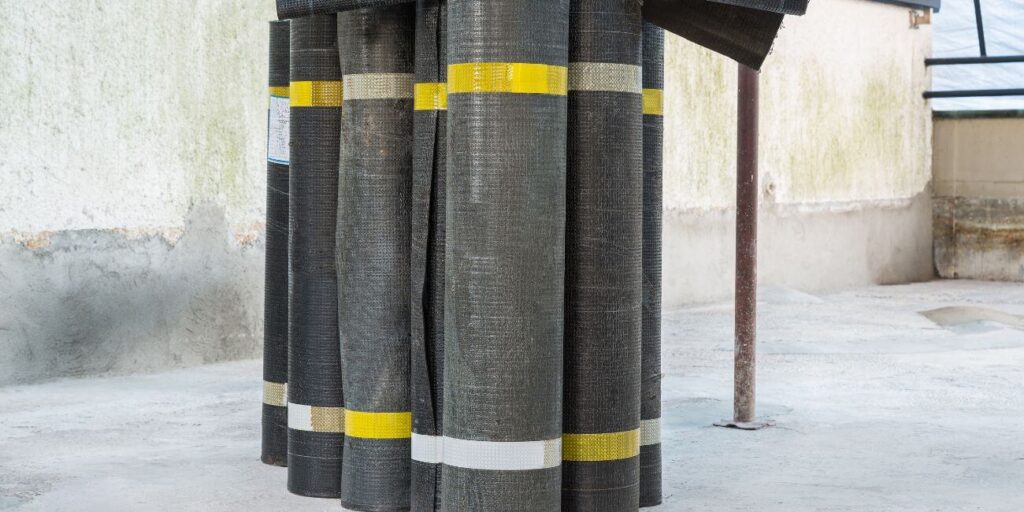Water seepage control is one of the crucial areas in civil engineering, environmental management, and landscaping. Whether it is the artificial lake construction at a resort, lining a landfill site so that it will not contaminate the adjacent land, or protection of an underground garage from potential water damages, impervious systems become inevitable. Recently, geosynthetics have been developed to address such practical challenges in an effective way. Among such, one of the most popular is the Geosynthetic Clay Liner, or GCL, composed of natural bentonite clay combined with geotextiles.
Table of Contents
-
-
-
-
- 1. What are Geosynthetic Clay Liners?
- 2. What Is a Geosynthetic Clay Liner Used For?
- 3. How Thick Is Geosynthetic Clay Liner?
- 4. What is the Purpose of a Clay Liner?
- 5. What is the Difference Between Geomembranes and Geosynthetic Clay Liners?
- 6. Essential Features and Advantages of Geosynthetic Clay Liner
- 7. Installation Guidelines for Geosynthetic Clay Liner
- 8. Technical Parameters and Quality Control
- 9. Additional Considerations for Construction and Protection
- 10. Conclusion
-
-
-
In this comprehensive blog post, we’ll explore in depth every nook and cranny of the Geosynthetic Clay Liners. It defines what a GCL is, discusses its various applications, makes comparisons with other geosynthetic solutions-geomembranes-explores the technical parameters, and analyzes the best practices of installation. By the end, you should have a complete understanding of why the Geosynthetic Clay Liner is among the most trusted choices for anti-seepage and waterproof projects worldwide. We will also answer, in turn, the following questions: What is the application of a Geosynthetic Clay Liner? How thick is a Geosynthetic Clay Liner? What is the function of a clay liner? What’s the difference between geomembranes and Geosynthetic Clay Liners?

1. What are Geosynthetic Clay Liners?
A Geosynthetic Clay Liner or GCL is a specific anti-seepage geosynthetic product used for many civil engineering and environmental containment projects. It consists of a thin layer of bentonite-usually sodium bentonite-sandwiched between two geotextiles, one being woven and the other nonwoven. This bentonite clay has enormous water absorption capacity and, therefore, swellability that is utilized for impermeable barriers.
Sodium bentite can absorb water up to 15-17 times its dry volume, while calcium bentonite will only expand to three times its own volume. Upon saturation, the bentonite layer of the GCL forms a gel-like membrane that is fairly impermeable to water.
Major Components
- Sodium Bentonite: It represents the main waterproofing course which swells when brought into contact with water.
- Woven & Nonwoven Geotextiles: They protect the bentonite core, while reinforcing it and providing a means to hold the bentonite in its place.
Principle
When water comes into contact with the Geosynthetic Clay Liner, bentonite swells internally and fills interstices of the geotextile structure. Therefore, a dense and impermeable layer is formed that may avoid seepage under the action of several environmental conditions.
2. What is a Geosynthetic Clay Liner Used For?
Geosynthetic Clay Liner technology is used in every instance where water infiltration must be controlled or liquids contained:

1). Landfills and Waste Containment
GCLs act as a barrier to prevent the leachate from infecting the soil and groundwater. Large municipal landfills or hazardous waste disposal sites are also known to use GCLs quite often when it comes to their lining systems.
2). Ponds and Artificial Lakes
Golf courses, resorts, and urban parks feature artificial water bodies as part of their architecture. GCLs prevent seepage from these ponds and lakes into the surrounding soil.
3). Mining and Tailings Storage
The mining industry requires the construction of tailing dams to store the residue and by-products of chemical elements. A Geosynthetic Clay Liner keeps such hazardous materials at bay.
4). Roof Gardens & Underground Garages
GCLs can be placed directly over underground parking structures or building rooftops. By prohibiting the ingression of water, structural integrity remains intact, and a host of green infrastructure such as green rooftops can be realized.
5). Oil Depots & Chemical Storage Yards
Industrial sites require only the highest level of containment security to ensure the safety of that chemical or petroleum product stored on-site. GCL’s impermeability meets those high demands.
6). Infrastructure & Environmental Projects
From canals and irrigation channels, including wetlands restoration, the use of GCLs has proven themselves as one of the most viable methods whereby water movement and leakage can be curtailed.
Because it is flexible and self-sealing, a Geosynthetic Clay Liner adjusts to small ground movements, insuring a reliable degree of impermeability in the long run.
3. How Thick Is Geosynthetic Clay Liner?
Geosynthetic Clay Liner thickness usually ranges from about 5 mm to 8 mm. The most common thickness for most of these applications is 7 mm. These variations are related to the quantity of bentonite used, such as 4 kg, 4.5 kg, or 5 kg per square meter, as well as the design requirements of the project and environmental concerns. Thicker GCLs normally have more bentonite, a higher swelling capacity, and low permeability.
Geosynthetic Clay Liner Thickness | 5mm-6mm | 7mm | 7mm-8mm |
Weight (g/㎡) | ~4,000 (4.0) | ~4,500 (4.5) | ~5,000 (5.0) |
Bentonite (kg/m²) | ~4.0 | ~4.5 | ~5.0 |
Performance & Characteristics | 1. Moderate swelling capacity 3. More economical in some cases | 1. Balanced thickness and weight 2. Good sealing performance 3.Widely used in various projects | 1. Higher bentonite content 2. Greater swelling potential 3. Lower permeability and enhanced sealing |
Typical Applications | Small ponds, minor water features, moderate seepage control | Landfills, environmental containment, roof gardens, underground garages | Critical waste landfills, underground reservoirs, oil depots, chemical yards |
Weight Specifications
The general weights are from 4,000 g/m² to 5,000 g/m². That is from 4 kg to 5 kg every square meter. The heavier a GCL is, the more impermeable it will be due to the amount of bentonite used, translating to better water absorption.
Performance & Thickness
A heavier GCL will give wider coverage and a better sealing performance. It is for this reason that it may be useful in the landfills of wastes, underground water reservoirs, and critical environmental engineering projects where seepage prevention must be high.
4. What is the Purpose of a Clay Liner?
A clay liner, particularly a bentonite liner, is designed to function as an impermeable or low-permeability barrier. By utilizing the natural swelling properties of bentonite, a clay liner performs multifunctions, including:

Stopping Water Seepage
It is a waterproofing membrane. Constructed in landfills, water bodies, or at some industrial site, it prevents the leakage of water or any fluid from the confinement structure.
Protection of Groundwater
Clay liners prevent the leaching of contaminants and pollutants into native soil and groundwater. These liners form part of the environmental protection system in landfills and chemical storage areas.
Isolation & Separation
It provides a stable separation layer, which isolates the waste or liquid from the surrounding environment and reduces the possibility of contamination.
Constructive Compatibility
Bentonite-based liners are compatible with construction materials, including concrete. It has a capacity for self-sealing of minor cracks that may appear in the surrounding concrete structures arising from ground settlement.
5. What is the Difference Between Geomembranes and Geosynthetic Clay Liners?
Although both geomembranes and Geosynthetic Clay Liners can serve the function of inhibiting seepage, they are considerably different in composition, installation, and long-term performance.
1). Material Composition
- Geomembranes: Manufactured from polymer materials, such as High-Density Polyethylene—HDPE; one can obtain smooth or textured surfaces.
- Geosynthetic Clay Liners: Bentonite clay sandwiched between geotextiles, usually one being woven and the other nonwoven.
2). Installation & Handling
- Geomembranes: Welding or seaming is required by special equipment, with lots of care. Wrinkles or pinholes will surely reduce integrity.
- Geosynthetic Clay Liners: The usual is overlapping and anchoring. When necessary, the edges can be sealed by sprinkling loose bentonite granules. Since they are fabric-like, wrinkling during installation is less probable.
3). Long-Term Performance
- Geomembranes: Highly impermeable, if good seaming is performed; however, over time, degradation may take place due to UV exposure or chemical interaction if these are not protected.
- Geosynthetic Clay Liners: Bentonite is inorganic and thus naturally durable. The geotextile components may undergo deterioration with time, but the layer of clay remains stable and self-sealing.
4). Cost & Adaptability
- Geomembranes: These tend to be expensive for huge projects. Geomembranes are best applied in those places where a consistent barrier is required and with minimum mechanical damage likely.
- Geosynthetic Clay Liners: Generally cost-effective, particularly for applications where the subgrades are irregular and the installation must be flexible. Small punctures can auto-seal as the bentonite swells.
As a consequence of such differences, some designs even adopt a composite lining system in which the geomembranes are combined with a Geosynthetic Clay Liner for enhanced, redundant leak protection.
6. Essential Features and Advantages of Geosynthetic Clay Liner
Geosynthetic Clay Liner systems have a host of advantages that find their application in several projects ranging from private to public sector projects:

1). Compactness & Low Permeability
Bentonite under water pressure forms a tight diaphragm. At approximately 3 mm thickness when fully saturated, the permeability can be as low as 1×10⁻¹¹ m/sec, making it almost 100 times less permeable than 30 cm of compacted clay.
2). Permanent Waterproofing
Since sodium bentonite is an inorganic, natural material, it does not degrade like some synthetic polymers. Its impermeability remains constant and is practically insensitive to most variations in environmental conditions.
3). Ease of Construction
A GCL is easy to install since no heat or welding is required, as in geomembranes. The overlaps can be sealed with surplus bentonite powder and mechanical fastening, for example, nails and washers.
4). Temperature Tolerance
GCLs do not become brittle in cold weather; thus, installation can be carried out in temperatures as low as about –20°C, unlike many types of other synthetic liners, which may become rigid or even damaged at low temperatures.
5). Self-Sealing Capabilities
The high dilation capacity of bentonite allows GCLs to self-seal minor cracks or punctures that may appear by the occurrence of differential settlement or traffic-induced external damage.
6). Environmental Friendliness
Bentonite is a naturally available, non-toxic clay that does not have any poisonous effects on the environment. It does not release harmful chemicals into soil and water; therefore, GCLs are appropriate for sensitive ecological projects.
7). Cost-Effectiveness
The Geosynthetic Clay Liner may be more cost-effective compared to other systems of waterproofing, particularly for large projects. Its relatively low material and installation costs equate to a very attractive cost profile over its life cycle.
7. Installation Guidelines for Geosynthetic Clay Liner
A successful GCL installation requires good planning and adherence to recommended installations. The critical steps are listed below:
Site Preparation
- Base Layer Check: The substrate should be smooth and free from protrusions, debris, and sharp rocks.
- Subgrade Compaction: The subgrade should be well compacted to minimize differential settlement.
Handling & Transport
- Roll Storage: Store rolls in a dry location, no more than four rolls high. Protect them from rain and punctures.
- Movement: Move them using appropriate equipment such as scrapers or forklifts. Do not drag them on the ground to cause them damage.
Laying GCL
- Overlapped: Overlap adjacent sheets 150-300 mm (6 to12 inches).
- Anchor: Anchor using anchor trenches or other means, especially in windy or slope conditions.
Seaming & Joint Treatment
- Additional Bentonite: Sprinkle bentonite powder at overlaps for an improved seal.
- Sloped Areas: Try to avoid laying seams up or down steep slopes. The overlaps on slopes shall be as per design to prevent slipping.
Avoid Wrinkles and Folds
- Lay Flat: Keep the GCL in contact with the subgrade. Wrinkles in the GCL can result in the entrapment of water and defeat the barrier.
- Adjust As Necessary: if folds in the GCL are noted, the section shall be cut and relayed, or the folds can be ironed out before covering.
Protective Cover or Geomembrane
- Timely Cover: Once GCL is placed, it is commonly covered by an HDPE geomembrane, or a layer of protective soil. This step protects against mechanical damages and environmental factors.
- Backfilling: In the case of direct backfilling on GCL with soil, big-size equipment should not be passed over GCL without protection.
Post-Installation Testing
- Visual Inspection: Because of tears, punctures, or insufficient overlapping .
- Testing: Most projects require supplementary tests-usually tests in vacuum seams or even water infiltration tests on the seams for watertight seals.
8. Technical Parameters and Quality Control
To make sure of quality, Geosynthetic Clay Liner manufacturers and the project managers usually refer to standardized test results and technical specifications. Here are some common technical parameters:
Bentonite Expansion Coefficient
An important index of swelling capacity for bentonite. Its ordinary value is greater than 24ml /2g, reflecting good swelling power.
Mass per Unit Area
It is mostly greater than 4500 g / m² for normal GCLs. A greater value implies a thicker product and also more bentonite.
Tensile Strength
GCL must have resistance to stresses at installation. Values of the order of 10 KN/m (both longitudinal and transversal) are not out of the ordinary.
Elongation at Break
Typically ≤ 10% longitudinal and ≤ 6% transverse. It appears that the geotextile encapsulating the bentonite can undergo significant elongation prior to failure.
Permeability
Vertical permeability coefficients ≤ 5×10⁻⁹ cm/s are possible. The extremely low value of permeability explains the GCL water barrier performance.
Peel Strength
Is a measure of bonding between geotextiles, typically ≥ 65 N. It ensures that the bentonite will not migrate between the fabrics under applied loads.
Hydrostatic Pressure Resistance
Typical tests may specify withstanding 0.5 MPa, 72.5 psi for 24 hours without leaking. It ensures the GCL can support significant water or fluid pressures.
Quality control on the job site including verification of the condition of the rolls, monitoring of overlaps, and repairing any installation damage promptly with patches or replacement sections.
9. Additional Considerations for Construction and Protection

Construction Under Negative Temperatures
An important advantage of a Geosynthetic Clay Liner is that it can still be placed under freezing conditions down to –20°C when many traditional waterproofing materials become brittle or cannot be placed in service.
Wet Subgrades
If the subgrade is damp (without standing water), GCL can often still be installed effectively because the bentonite can adapt and swell as needed. However, significant puddles should be drained or dried before installation.
Protection Against Physical Damage
Once laid, the GCL should be covered or protected from exposure to sunlight, wind, and rain. Long-term UV exposure may weaken the geotextiles, and heavy rainfall can prematurely saturate or wash away bentonite in uncovered sections.
Chemical Exposure
GCLs generally handle a wide pH range and moderate chemical environments well. However, extremely acidic or alkaline solutions can degrade bentonite’s structure. Always consult the manufacturer’s guidelines when dealing with harsh chemical conditions.
Repairing Damage
Small tears or punctures can be fixed by placing a “patch” of GCL over the damaged area, ensuring at least 300 mm (12 inches) of overlap in all directions. Sprinkle extra bentonite powder around the damaged zone to ensure a watertight seal.
10. Conclusion
The Geosynthetic Clay Liner represents one of the most efficient and versatile answers to the control of water, leachate, and other fluids in a large number of engineering and environmental applications. By marrying the incredible swelling behavior of bentonite with structured support provided by geotextiles, GCLs allow for robust, self-sealing, cost-effective barrier systems.
Key Takeaways
- Very Impermeable: The swelling capacity of sodium bentonite forms an almost impermeable barrier to the penetration of water.
- Many Uses: From landfill to man-made lakes, GCLs do the job for several purposes related to seepage control.
- Construction-Friendly: Easy to lay down, can adjust to subgrade unevenness, and eliminates expensive on-site welding equipment; hence, usable at the construction site.
- Ecological: Principally made out of natural clay, GCLs pose absolutely no toxic threat to nature.
- Future Developments: GCLs will surely be deployed in other areas from present and future infrastructure, both for civil, industrial, and environmental purposes.
Whether it’s a newly designed landfill, a peaceful artificial pond, or protection for an underground structure that may suffer from a leak, the Geosynthetic Clay Liner can provide the performance and durability, along with cost-effectiveness, that will ensure success for such projects. With its natural bentonite core, it is unbeatable in water retention and contributes to environmental friendliness in construction.
As a manufacturer, supplier, and wholesaler of geomembranes and Geosynthetic Clay Liners in China for almost twenty years, we will be able to serve customers with appropriate product specification, best practices for installation, and performance for your projects. If you want to know more about geomembranes or Geosynthetic Clay Liners, please do not hesitate to contact our technical support team. When properly planned, installed, and maintained, GCLs can be one of the valuable tools in the armoury of waterproofing and containment solutions for many years to come.

